Ultimate Guide to Exploring Orkney in your Campervan or Motorhome
[[ THIS GUIDE IS WORK IN PROGRESS ]]
Exploring the Orkney Islands is something we would recommend to anyone with even the slightest sense of adventure! The Islands are filled with rich history, beautiful landscapes, incredible wildlife, tasty local food and good people!
You could easily spend a long time in Orkney, in fact nearly every local we met had moved to Orkney at some point over the last 20 years because they fell in love with it after a holiday!
The locals on the island are called Orkadians and they don’t particularly see themself as Scottish as only recently they were seen as Skandinavian.
Getting to Orkney
There are multiple ways to get to the islands from different parts of mainland Scotland. The most common way to travel to Orkney is by Ferry.
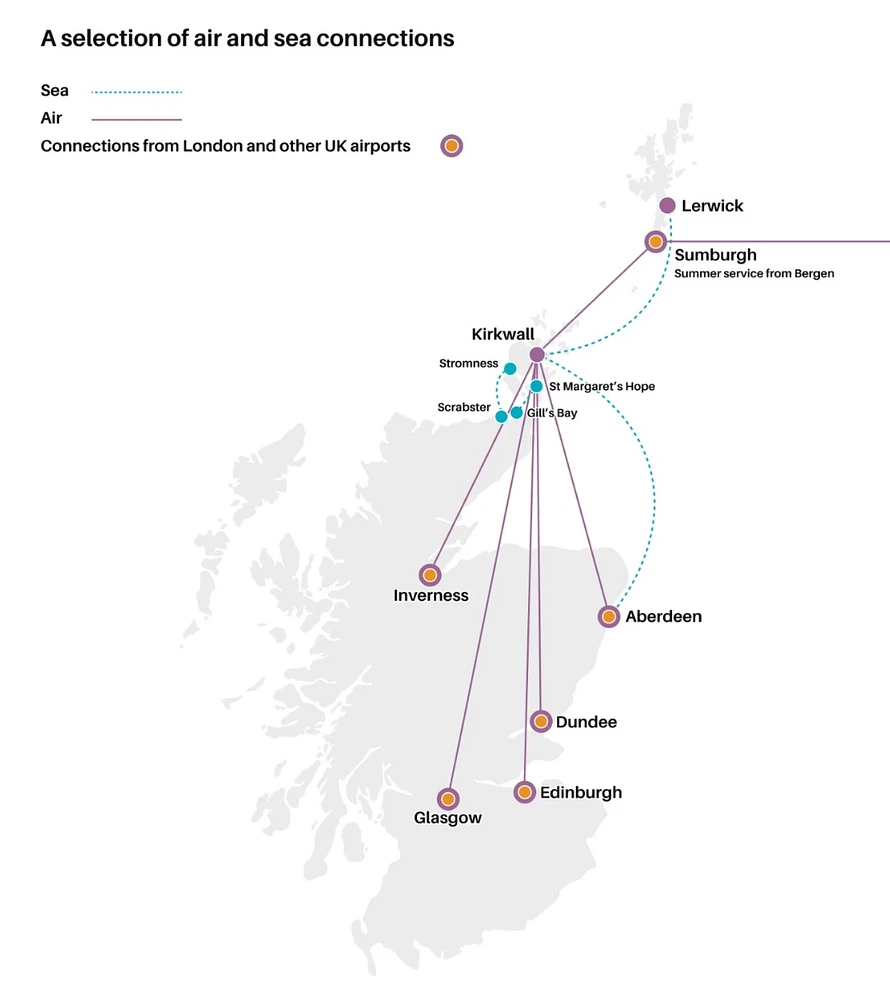
We took the Ferry from Thurso (Scrabster) to Stromness, return, and for 2 Adults, 2 Children (10 and 2 at the time) and our camper van which is around 6.5m cost us £350.

The island is relatively small so it wouldn’t hurt if you didn’t have a route planned as it takes roughly 1 hour to travel from one side to the other, and at every twist and turn there is something to see and do! However just in case it helps, we’ve put together a suggested route that you could use on your Orkney adventure! We had zero plan when we arrived in Orkney and picked up a leaflet on the Ferry journey over, this is what we used to put together our loose plan based on the weather.
This is our Overland Gaming Worthwhile places to visit while on Orkney:
1. Stromness Highstreet - 3 Hours
This is the second largest town on Orkney and boasts a rich history with a high street that will teleport you back in time. Its not advised to drive your van or motorhome down the high street as its really narrow. Locals have mentioned its a beautiful town but its turning into a ghost town, especially in the winter as its full of second homes and holiday homes.
The harbour is the heart of the town, but elsewhere you’ll discover independent shops, studios, and galleries, as well as the world-renowned Pier Arts Centre. The best way to see Stromness is to simply take a stroll through the street as it runs from north to south, exploring all the nooks and crannies you can find.
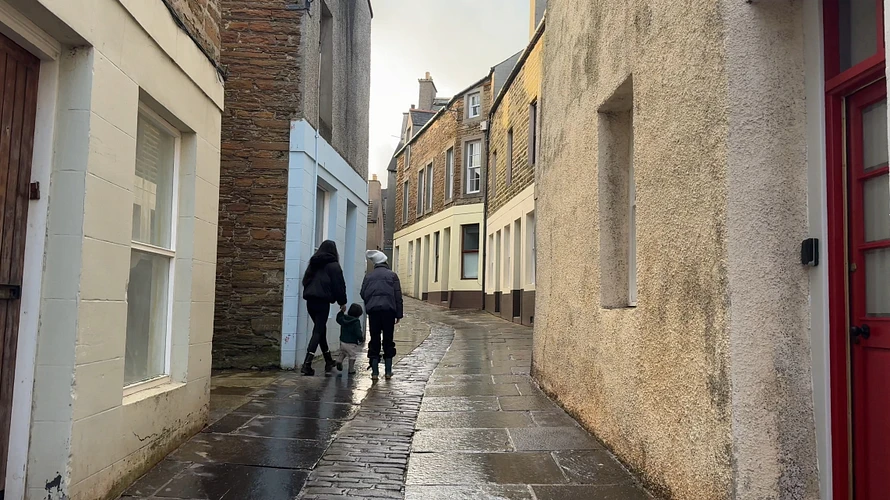
2. Standing Stones - 1 Hour
Dating back over 5000 Years, the standing stones are a great place to visit with only a short walk from the car, so perfect for little legs. You are able to walk right up to the stones and touch them and there is a couple of great boards filled with the history for the site.
The Stones of Stenness today consist of four upright stones up to 6m in height in a circle that originally held 12 stones. The focus of the interior was a large hearth. The stones were encircled by a large ditch and bank, the form of which has been lost over time by ploughing.
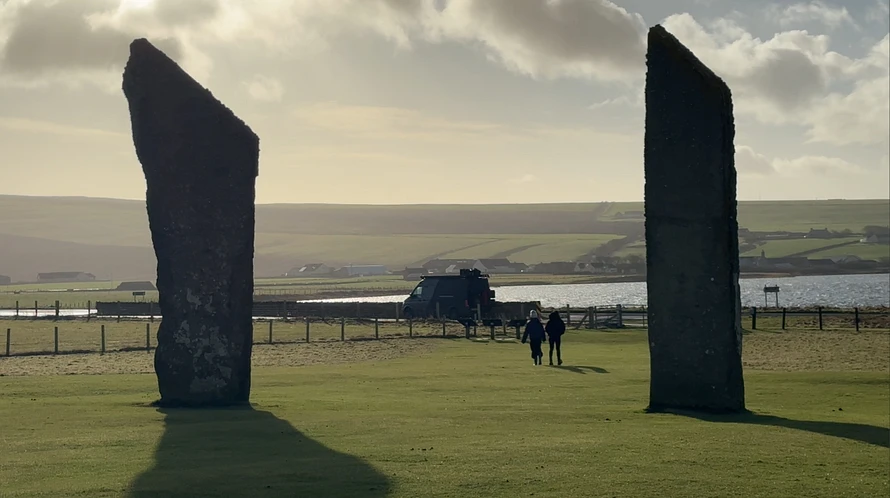
3. Ring of Brodgar - 1 Hour
It's quite like Orkneys own Stone Henge, if you've ever been there! A massive circle with a ditch around the outside with 36 standing stones all standing tall in a circle - it doesn't sound like much but when you are there its really fantastic. Originally there was 60 stones and there are at least 13 prehistoric burial grounds. Its got a great car park with a short walk to the site so great for all members of the family.
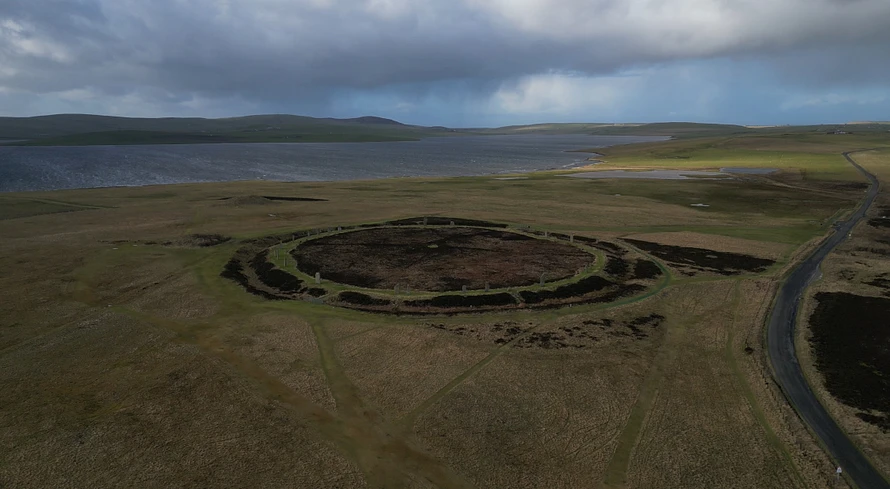
4. Skara Brae - 3 Hours
I wasn't sure what to expect visiting this place, yet another uncovered ancient settlement? Well yeah, it is, but it is in extraordinary condition to the point it doesn't look real. They say its the best preserved group of prehistoric houses in all of Western Europe complete with some original furniture! This requires paid admission at around £12 per adult. You can find all the current prices here: https://www.historicenvironment.scot/visit-a-place/places/skara-brae/prices-times/

Perfect location for the whole family and access to a beautiful beach just outside the settlement!
First uncovered by a storm in 1850, Skara Brae remains a place of discovery today. Visit a replica Neolithic house to see how its full interior might have looked. Then follow the path that overlooks the ancient buildings, imagining what life was like for the farmers, hunters and fishermen who lived here. The prehistoric houses still contain stone ‘dressers’ and box-beds.
5. Brough of Birsay - 3 Hours
Perhaps one of my favourite locations on the trip. We were met with a beautiful calm evening with an insane sunset. We stayed the night as the tide was high ready for the low tide in the morning. We set off around 8am just as the tide was low enough to cross over. You can find local tide times on this website: https://www.tideschart.com/United-Kingdom/Scotland/Orkney-Islands/Orkney/ This settlement is the remains of Pictish, Norse and Medieval settlers.
Reach this very special tidal island by causeway to explore Pictish, Norse and medieval remains. Brooches, rings and dress pins found on the Brough of Birsay suggest that it was a Pictish power centre. The Norse settled the island 200 years later, in the 9th century, but may have lived peacefully alongside the Picts. It’s still possible to make out the remnants of Norse houses, barns and even a sauna. Later, a small church and monastery were built on Birsay.
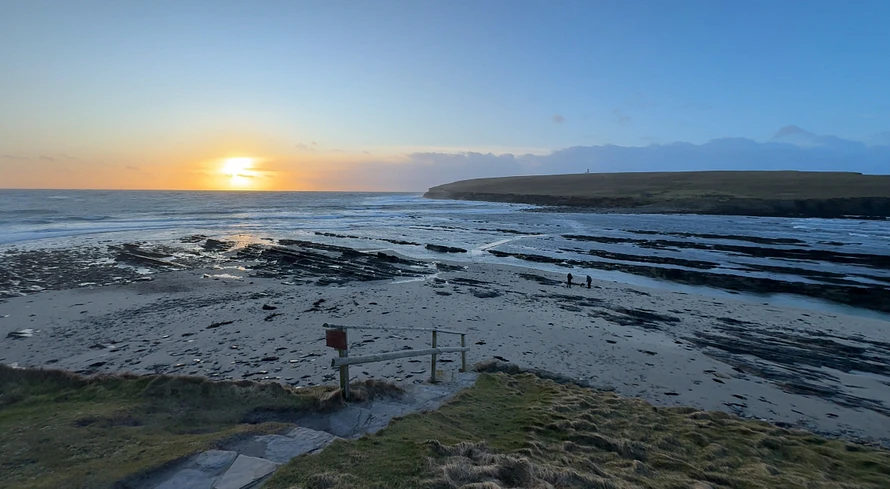
6. Broch of Gurness - 2 Hours
This location is quiet, beautiful and full of history! The Broch of Gurness is open between 1st April to 30th September. We visited in February and although the Visitor Centre was closed, you were still able to explore the Broch - it is important to respect the site even more when there are no staff present. You will find up to date prices here: https://www.historicenvironment.scot/visit-a-place/places/broch-of-gurness/prices-times/
Explore an icon of Orkney’s rich archaeological heritage. This impressive Iron Age complex is one of the most outstanding examples of a later prehistoric settlement to survive in Scotland.
7. Kirkwall - 4 Hours
Orkneys main town where there is plenty of things to do from its ancient cathedral and Viking Heritage to modern day shopping and art! If you're arriving in a campervan or motorhome, we advise you to take a look at our Interactive Map for best places to park or campsites to stay at during your stay in Kirkwall. Although the roads are not as small as Stromness, we would still advise to park outside and walk in to the town.
8. Churchill Barriers - 6 Hours
Quite possibly the place we spent the most time. The Churchill Barriers are rich in both modern and ancient history. There is vast beautiful beaches, plenty of park ups and plenty to do for the whole family.
It was the sinking of HMS Royal Oak more than 80 years ago that set in motion plans to build these four concrete causeways. A German U-boat crawled into Scapa Flow in October 1939 and fired torpedoes at the slumbering battleship, resulting in the loss of 834 lives. Before the causeways were built block ships were used to prevent enemies from entering which you can still see many of today.
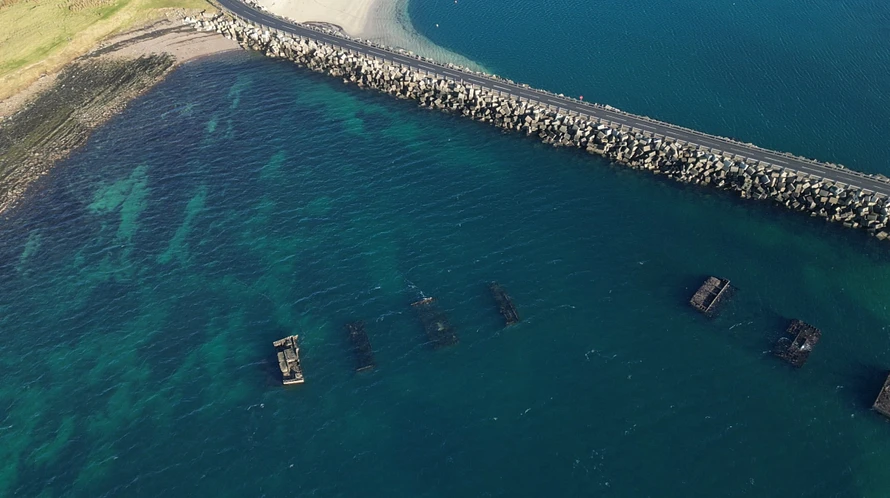
9. Italian Chapel - 1 Hour
As an atheist family, the Italian Chapel was not high on our to do list, however this is just yet another place to visit which shows the rich history that Orkney has.
A shortage of manpower to construct the Churchill barriers coincided with the capture of thousands of Italian soldiers fighting in North Africa, so a decision was taken to transport 550 men to Camp 60 on Lamb Holm and a similar number to Camp 34 in Burray. Following a request from the camp priest, Fr Giacobazzi, it was agreed that two Nissen huts would be joined together to provide a chapel. Among the Italians in Camp 60 was an artist, Domenico Chiocchetti, and he was given the task of transforming the two Nissen huts into a chapel.
Wild Swimming in Orkney
Something I don't often do because quite frankly im a wimp, let alone in Orkney with exceptionally cold waters, haha! However, we did it! Our chosen beach was Hoxa and we did it when the sun was out :P
Here is a list of Beaches that are suitable for Wild Swimming in Orkney:
- The Pow (Ethan’s Pow) – on the north west coast, within the flagstones, this sheltered low tide pool is a wonderful place for a swim (and snorkel to enjoy the sea life you are sharing your swim with)
- The Pier – on the east coast the clear waters around the pier are simply wonderful. There are toilets and showers in the Kelp Store
- Bothican (Bay of Moclett) – beautiful, pristine sand beach
- Taing Bay – another beautiful sand beach, if there is no seaweed.
- Hoxa Beach - another beautiful sand beach at both high and low tide.
Wild Swimming is exhilarating and gives your body that much needed shock to keep things moving, its great for your mental health and general wellbeing. While there is no right or wrong way to Wild Swim we do have a couple of recommendations and Safety Tips:
- Flipflops, Crocs or Sea Shoes are great to have but not nessacery. I left my shoes in the car but it can be a painful walk back if there's lots of pebbles.
- Warm Layers! Make sure you have a towel or dryrobe ready for when you get out. Get dry as quickly as possible, get a hat on and a warm drink inside you.
- Get out before you get Cold!! Now the moment you hit that water you're going to be very cold, but what we mean by this is after 30 seconds or so you will start to feel "okay" but after that phase passes at some point you will really start to feel cold, get you before you get too cold. If you start to feel "warm" you've been in too long and its time to get out. Everyone has different thresholds and that is okay - remember, you will still be getting colder when you get out for a bit too.
- Don't swim alone. Try and make sure you always have someone nearby.
- Remember, the seas around Orkney are dangerous, with low temperatures even in summer and many areas subject to strong currents/waves. If you're not 100% sure make sure you don't go too deep and make sure you can stand up. If you’re keen to swim in Orkney’s seas or lochs, please be careful, and follow local advice on safe swimming spots/tides where possible.

Interactive Map of Orkney: https://overlandgaming.com/en-gbp/pages/orkney
